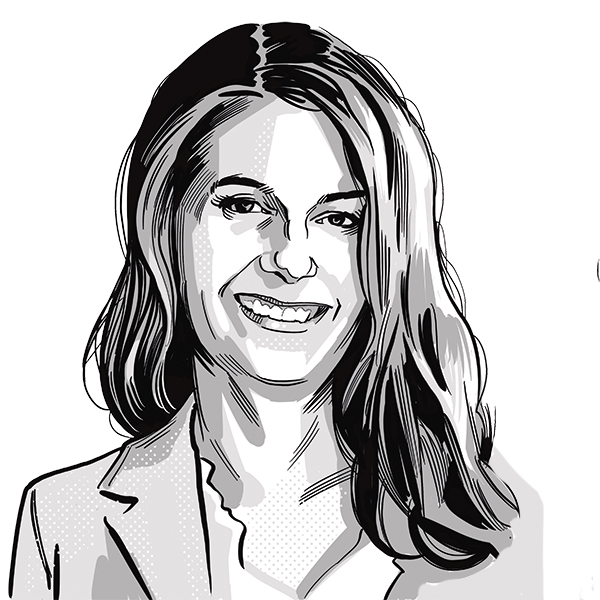You may have missed it amid the golden glitter and the East Wing ruins, but Donald Trump isn’t the only one redecorating. Friedrich Merz has been at it too – less Versailles, though, more in the footsteps of his predecessors.
Back in the 1970s, Helmut Schmidt filled the Bundeskanzleramt – the chancellor’s HQ – with German expressionism, notably Emil Nolde’s Brecher. We’ll come back to that one.
Sadly, Schmidt also started the tradition of Kanzler portraits – an “ancestral gallery” so dire that art historians call it the most dismal collection in the entire country. Perhaps that’s why Angela Merkel still hasn’t commissioned hers, four years into retirement.
At the old Bonn chancellery, Henry Moore’s sculpture Large Two Forms, right in front of the building, is still iconic of the old Bundesrepublik.
After a change of capital, Eduardo Chillida’s 5.5 metre iron sculpture Berlin took a similar position outside the new Bundeskanzleramt and is equally symbolic: with her two monumental arms almost touching, she stands for a new, united Europe.
In 2005, after Gerhard Schröder refused to join the Iraq war, Swedish artist Carl Fredrik Reuterswärd gifted him and the German people a replica of Non-Violence (The Knotted Gun), now lounging in the Chancellery garden.
Behind his desk, Schröder chose Der stürzende Adler, a powerful eagle seemingly falling. It’s part of Georg Baselitz’s “upside-down” works. Merkel promptly removed it on arrival in 2006.
She preferred Konrad Adenauer to have her back – an Oskar Kokoschka portrait from 1966, showing the chancellor at his preferred holiday spot, Lake Como. Facing her were two Nolde paintings she liked: Brecher (Breaking Wave), which had already been loaned out by Helmut Schmidt, and Blumengarten A (Flower Garden A).
But in 2019 the chancellor sent Nolde packing. Impeccable timing, too: Just days later, a Berlin exhibition Emil Nolde – A German Legend. The Artist in National Socialism revealed what had long been known: while the Nazis defamed the expressionist Nolde as a “degenerate artist”, he was a member of the Nazi Party, an antisemite and a racist.
After decades at the centre of power, Nolde in effect earned himself a Hausverbot (stay away order) in the chancellery. His works are back at the Nationalgalerie.
Olaf Scholz, ever the minimalist, moved in with two photographs showing the German pavilion at the 1958 Brussels World’s Fair.
Now Merz is back on track, putting art on the political map. Ernst Ludwig Kirchner’s Sonntag der Bergbauern (Sunday of the Mountain Farmers) has been transferred from its prominent place in the cabinet room to feature in an upcoming exhibition at the Kunstmuseum Bern. In its place, the Swiss gave us Neue Sterne (New Stars) by the surrealist Meret Oppenheim. Every Wednesday, at the cabinet meeting, her colourful masterpiece will now star on the evening news.
Suggested Reading


Merz stumbles through a migration minefield – again
Behind Merz, when sitting at his desk, now looms a monumental piece by Anselm Kiefer, one of Germany’s most acclaimed artists. The French president, Emmanuel Macron, commissioned the German, who owns a large studio space in the south of France, to create designs for the Pantheon in Paris. The last time this happened was in 1924.
The painting in the chancellor’s office is called Des Herbstes Runengespinst (The Runespiderweb of Autumn).
Its barren landscape shows snow-covered fields and is dotted with objects that resemble dancing runes and tank barriers. The painting belongs to a series dedicated to Paul Celan, a Holocaust survivor and one of the most renowned 20th-century German poets.
The work is on permanent loan – not, as is the custom, from a national institution or museum, but from a private, politically well-connected art foundation. This has raised eyebrows at the newspaper Frankfurter Allgemeine Zeitung, which says it blurs the line between cultural prestige and market speculation, arguing that private collectors are part of the art machinery that continues to increase Kiefer’s significance and prices. Private interests, in their view, shouldn’t figure in the chancellery.
When it comes to the Kanzleramt, the public’s concerns are elsewhere: not art, but architecture. Forget remote work – the chancellery is expanding. The planned project will not only add 400 new offices but also double the space, at an estimated cost of £700-880m. You could buy a lot of masterpieces for that.




